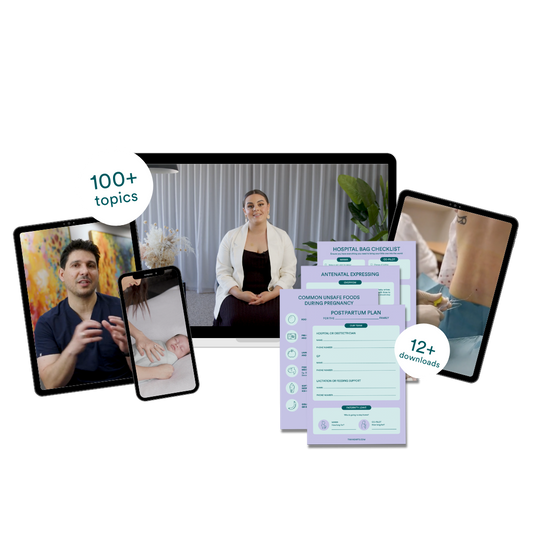In loving memory of Riley;
sadly lost to Whooping Cough
“Riley Hughes was born a gorgeous and healthy baby boy on February 13th, 2015. He was our second child and we were so delighted to have him in our family. At three weeks of age, he started displaying mild cold-like symptoms, and developed an occasional cough.
We called out a doctor, who assured us he was fine. However instincts took over, and after a night where he slept a lot and barely woke for his usual two-hourly breastfeed, we knew something was wrong. We took him straight to our local children’s hospital, Princess Margaret Hospital in Perth, Western Australia. Riley was admitted that afternoon, and at first it was thought he had bronchiolitis.
Pretty quickly, the doctors suspected pertussis (whooping cough) and began treating him for it. On the 4th day of his hospital stay, he was taken to PICU with pneumonia, and swab tests confirmed he did indeed have whooping cough.
He grew steadily worse and worse, and despite all the best medical intervention, Riley passed away in our arms the next afternoon, at just 32 days old."
Introduction
Whooping cough, also known as pertussis, is more than just a regular cough. This highly contagious respiratory infection has seen a worrying resurgence in Australia recently, with outbreaks reported across multiple regions. The increase in cases highlights the need for awareness and vigilance, especially for parents of young children. As whooping cough can be particularly dangerous for babies and toddlers, understanding the risks, symptoms, and prevention methods is crucial.
In rare cases, whooping cough can lead to:
- pneumonia
- brain damage
- death
Let’s dive into what you need to know to keep your little ones safe.
What is Whooping Cough?
Whooping cough is a bacterial infection caused by Bordetella pertussis. It primarily affects the respiratory tract, causing severe coughing fits that can last for weeks.
🦠 Highly contagious – Spreads easily through coughing and sneezing.
🔄 Repetitive coughing fits – Can be so severe that it causes a "whooping" sound when the child breathes in.
👶 Most dangerous for infants – Babies under six months old are at the highest risk of serious complications.
Why is Whooping Cough Dangerous for Little Ones?
Whooping cough is not just a nuisance; it can lead to serious health complications, especially in infants and young children.
🫁 Breathing difficulties – The coughing fits can be so intense that it makes it hard for the child to breathe.
😷 Pneumonia risk – A common complication resulting from the infection.
🚑 Hospitalisation – Severe cases may require medical intervention to prevent further complications.
How Whooping Cough Spreads
Whooping cough is highly contagious and spreads easily through droplets in the air. Here’s how it spreads:
🤝 Close contact – Direct contact with an infected person through coughing or sneezing.
🏠 Household transmission – Easily spreads among family members in the same home.
🌬️ Airborne droplets – Can be inhaled when an infected person sneezes or coughs nearby.
Prevention: Protecting Your Little Ones
Prevention is key when it comes to protecting your little ones from whooping cough. Here are some effective ways to prevent infection:
💉 Vaccination – Pregnant women should get vaccinated to protect newborns, this should happen between 20 and 32 weeks. Anyone who hasn't had a whooping cough vaccination in the past 10 years, and will be around your baby in the early days, should get one. This should be at least 2 weeks before they see your baby. Details about the immunisation schedule for whooping cough for your baby can be found here
🧼 Good hygiene practices – Encourage regular handwashing and covering the mouth when coughing or sneezing. Check out our newborn rules at the end of this blog. These rules are a great way to keep your little one safe.
🚫 Avoid close contact – Keep your child away from anyone showing cold-like symptoms, especially during an outbreak.
Key Symptoms of Whooping Cough
Recognising the symptoms of whooping cough early can help prevent it from spreading and ensure your little one gets the care they need.
🤧 Early symptoms – Similar to a common cold, with a runny nose, mild fever, and occasional cough.
🤒 Severe coughing fits – After one to two weeks, coughing becomes more severe, leading to intense bouts that can last for minutes.
🗣️ The “whoop” sound – The characteristic “whooping” noise occurs as the child gasps for air after a coughing fit. Not all children make this sound including:
- Infants under 6 months: Very young babies may not make the "whoop" sound due to their immature respiratory systems. Instead, they might have symptoms like apnea (pauses in breathing), gagging, gasping, or vomiting after coughing spells.
- Older children, teens, and adults: Older children, teenagers, and adults might not produce the whooping sound. They often experience a prolonged cough that can last for several weeks, sometimes referred to as the "100-day cough.”
- Vaccinated individuals: People who have been vaccinated against whooping cough might still contract the disease, but their symptoms are typically milder and may not include the whooping sound.
Treatment Options for Whooping Cough
If your little one does get whooping cough, early treatment is crucial to prevent complications and reduce the spread to others.
🔬 Antibiotics – Can help if given early in the infection, reducing symptoms and preventing the spread to others.
🛌 Home care – Keep your child comfortable by providing plenty of fluids, rest, and a calm environment. Use a humidifier to soothe the throat.
🌡️ Monitor symptoms – Watch for any signs of dehydration or breathing difficulties and seek medical advice promptly.
When to Seek Medical Help?
It's important to know when to seek help. Remember:
🚨 Young babies are particularly vulnerable; seek urgent medical assessment
🚨 Any child who has signs of whooping cough and shows any red flags. Our first aid courses or surviving sickness course will empower you with all the information you need to know.
🚨 Any child who has signs of whooping cough should be seen by a doctor. If the child appears well and has no red flags, book to see your GP. Please call ahead as the staff will take precautions to protect themselves and others.
Common Myths About Whooping Cough
There are several misconceptions about whooping cough that can lead to misinformation and inadequate protection. Let’s debunk some of these myths:
🧩 Myth: Only affects children – Adults can also get whooping cough, and they can spread it to infants and young children.
🌦️ Myth: It's only a winter illness – Whooping cough can occur at any time of the year, not just in winter.
💉 Myth: Vaccinated children can't get it – While the vaccine is highly effective, it’s not 100%, and immunity can wane over time, which is why boosters are essential.
Key Takeaways
- Stay up-to-date on vaccinations – The best protection against whooping cough.
- Practise good hygiene – Encourage habits that reduce the spread of germs.
- Be vigilant – Recognise the signs early and seek medical attention if needed.
- Download our newborn rules below

We know it's a group effort to keep a new baby safe. Download these slides to share on your social or send to loved ones, spreading the essential message of working together to protect and care for your precious little one 👇








